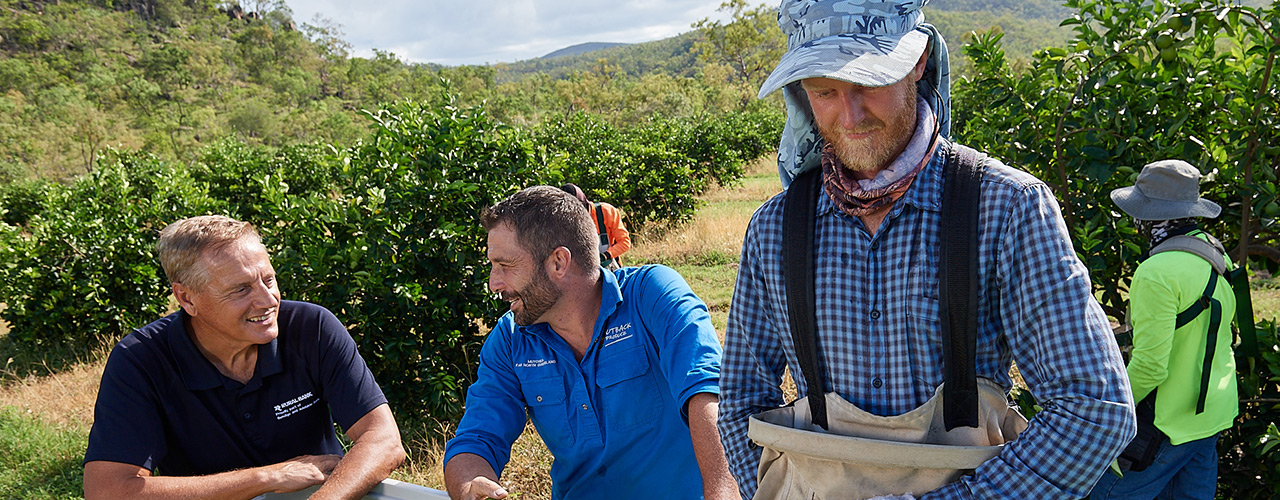Innovation in Australian agriculture is not new. Aussie farmers have been driving the creation of new technologies and farming systems since well before “agtech” was a word. Examples range from GPS-guided tractors and new varieties, to raised beds and controlled traffic. But “agtech” is a new phenomenon. Characterised by the entrance of new players, new business models, and new technologies. If we can avoid the hype, agtech holds huge potential for Australian agriculture.
Three big trends
There are three big trends driving the growth of agtech.
- Technology has dropped in cost and increased in performance. This means that even incredibly complex technologies are accessible to new players. You no longer need big dollars or many years to bring products to market. Thus, big companies are no longer the only source of innovation.
- Shifting consumer preferences are putting new pressures on our food and fibre system. In addition to healthy, safe, affordable food, consumers now also want convenience, premium eating experiences, and confidence that the produce they're purchasing is good for their families and the planet. These trends may seem niche, but they are growing at an astounding pace and are impacting the bottom lines of companies globally. The traditional big players in food and agriculture are now scrambling to partner with agtech startups to complement their traditional R&D activities.
- Agriculture is a massive and growing industry. Opportunities exist for both impact and commercial success. In Australia, ag contributes approximately $50B annually to Australia’s economy. It's the fastest growing industry. Investors love big markets, and entrepreneurs are drawn to the opportunity to build companies that can do good and do well. Today, the global market for agtech products and services is estimated at $500B. It's expected to grow to $730B in the next three years. There’s massive growth potential for Australia to capitalize on.
And yet, the hype!
Despite all the agtech activity and potential, the industry can be frustrating for farmers. Products often seem (or in the worst cases, are) half-baked. As startups race to be the winner that takes all in any given area, the proliferation of similar products is confusing.
This feeling of “hype” is not to be understated or ignored. Farmers are working incredibly hard to run businesses that benefit all consumers. And doing so while facing levels of uncertainty and constraint that most non-farmers would find overwhelming. Adopting technologies that, however flashy, are failing to solve problems and add real value is not what agtech is about.
But wait, there’s hope!
Agtech is about new ways of solving industry problems. Here are three examples where agtech has the potential to deliver real value to agriculture.
-
Rapid business model evolution.
Well-trained and experienced startups follow a rigorous process to align their products with market and customer needs. Big companies can struggle to meet the changing needs of their consumers. They get stuck in existing business models and processes used because “we’ve always done it that way”. Not because it’s what’s best for the customer. Agtech startups are bringing solutions to market that break down existing barriers, challenge old mental models and processes, and deliver lasting value to producers. Further, agtech startups are a new form of extension that can help commercialise world-class Australian agricultural research.
-
Rejuvenated regional communities.
As farming continues to use more digital technology, new skills and new jobs will be required to support farming systems and equipment. Simultaneously, new technologies can help rural and regional communities to stay connected and fulfilled. One of the few good things to come out of the COVID-19 pandemic was proof that much more could be done digitally and online than ever tried before.
-
Producers as more than agtech customers.
Agtech presents new ways for producers to get involved in innovation. Producers can be innovators themselves, creating new products they know solve real problems. They can also be advisors and even investors. They can help shape agtech solutions, and in turn share in the enterprise value of the startup, as well as the value of the product.
Aussie agtech innovators leading the way
Australian agtech companies are already delivering on this potential. Examples of world-class Australian agtech companies that are creating value for producers and investors include:
- AgriWebb secured $30 million at the start of 2021 in a Series B funding round led by Canadian telco Telus. This proves yet again that Australian agtech can play on the global stage. The company which started in 2014, is now worth $100 million.
- FluroSat (US $8.6M raised), a world leader in remote crop sensing, has attracted international capital. It's now actively and successfully expanding overseas.
- Observant, a cloud-based platform for remote water management, acquired by Jain Irrigation.
- AgDNA, a farm management software platform acquired by CHNI.
- Vow, a Sydney-based cellular ag company, raised $7.7million seed funding to grow its suite of cultured meat products. This comes as the alternative protein sector booms.
- Swarm Farm Robotics, an autonomous agriculture vehicle platform, secured $4.2 million to grow their business in Emerald, QLD. This was part of a funding round led by Tenacious Ventures and Artesian in 2020.
The National Farmers’ Federation has set the goal to grow Australian agriculture to $100B by 2030. Technology and innovation are critical to achieving this. As is attracting both local and international capital and collaborators.
Embracing the agtech revolution in Australia may mean we can aim even higher than $100B. If we are able to export our knowledge, innovation and know-how in the form of agtech solutions that avoid the hype and deliver real value, maybe we can leave $100B in the dust.
To learn more about Aussie agtech, check out our episode of ‘Beyond the Farm Gate’ with Sarah Nolet or visit www.agthentic.com
Most Popular
Subscribe to insights today
Receive reports direct to your email by subscribing to Rural Bank Insights.



